Greek Orthodox Church

The Greek Orthodox Church is the House of God.
Jesus Christ is the Head of the Christian church.
The church brings Heaven and earth together through the Divine Liturgy, the Sacraments, Prayer and Worship.
We go to church to hear the Voice of God and to find Jesus, the Good Shepherd Who leads His flock to greener pastures.
This service is seen as a re-enactment of the Birth, Life, Death and Resurrection of Jesus Christ.
Many a poor heart, burdened with worry or uncertainty, go to church seeking solace and spiritual inspiration.
We feel the comforting presence of our Blessed Virgin Mary (Greek: the Theotokos) as we pray in our own words, our needs, our hopes and our dreams.
Acknowledging God's Existence strengthens our need for Him.
When we believe in God unconditionally, our "heart spiritually awakens," our lives have meaning, a purpose and an eternal destiny.
The beauty of a Greek Orthodox Church is designed to direct the faithful towards the illuminating Light of Jesus Christ, our Savior Who offers salvation through repentance and the forgiveness of sin.
The more we overcome sin, the more the Light of Christ shines within.
That Special Sunday
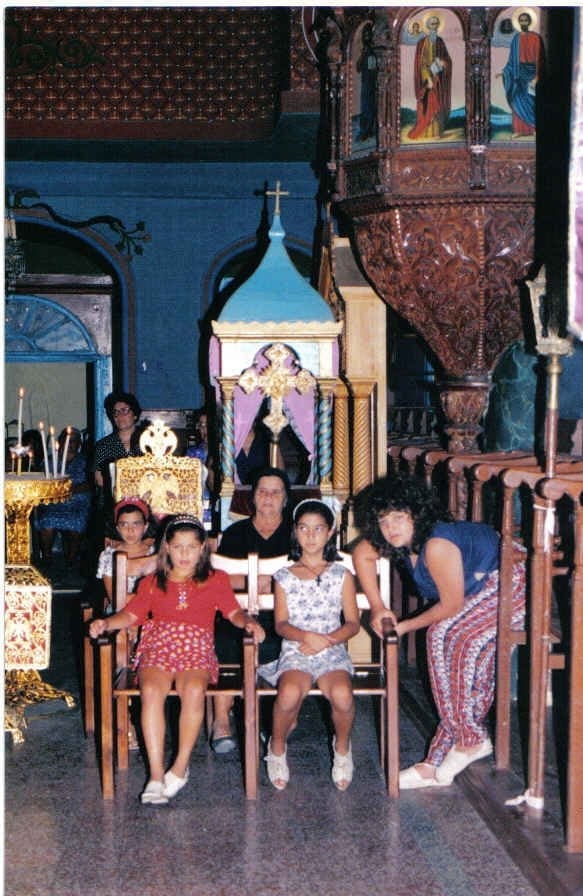
Sunday is the Lord's Day.
The Seventh Day was given to humanity by God to devote time to their spiritual needs.
Every Sunday, especially after sunrise has a special feeling because Jesus rose from the dead early that morning.
It is the day Christians celebrate Christ’s Resurrection, three days after His Death on the Cross on Good Friday.
Jesus Christ also made His Triumphal Entry into Jerusalem on a humble donkey on Palm Sunday where the people greeted Him as the King of Israel with palm branches and His Divine Kingdom was proclaimed under the branches of a palm tree.
Every Sunday and on all holy days, we go to church to achieve union with God and with each other through the Divine Liturgy and the Sacraments.
During every Orthodox service, the priest will swing an incense burner filled with hot coals and the scents of frankincense, myrrh, and rose to honor Christ and His Mother, the Saints and to the worshipers in the church.
Papa Matheos Stamatakis
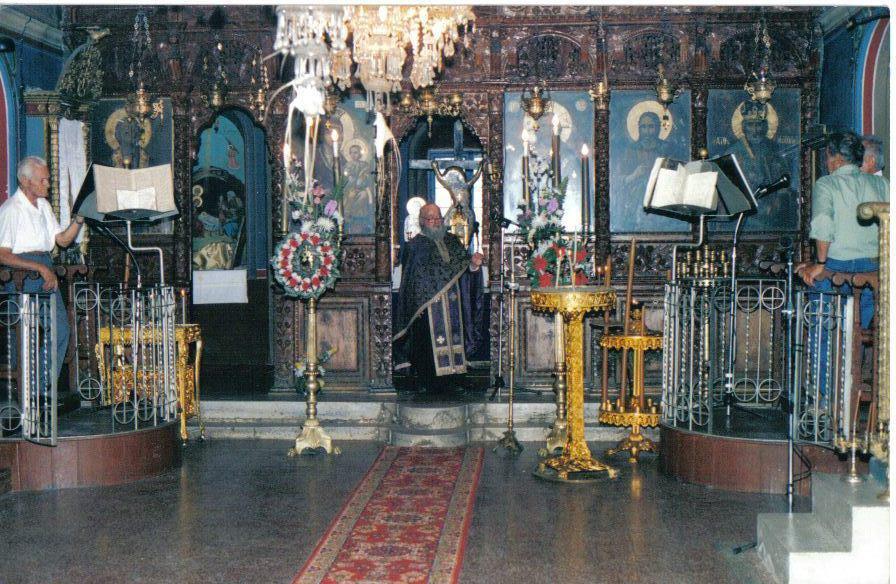
Reverend, Father Matheos Stamatakis, from the little hilltop village of Mesanagros in Rhodes Island, Greece, found his passion in serving God and sharing in the Special Mission of the Good Shepherd, Jesus Christ.
From the start of Jesus Christ’s Ministry, He called on people to share in His Mission to shepherd God’s people starting with the Twelve Apostles.
The service of the priest is described in the Holy Bible by the love and sacrifice in our Lord, Jesus Christ’s Story of the Good Shepherd Who came to guide His flock to greener pastures.
Its Sunday morning and the church bells of Taxiarhis ring in every direction across the hills and valleys of Mesanagros.
The priest of Mesanagros, Papa, Matheos Stamatakis stands in front of the Holy Doors of the altar of his church wearing his sacramental vestments and begins the Divine Liturgy. His humble congregation express their faith through their hearts by acknowledging Jesus Christ in their lives as they bow to honor and Worship Him as the King of their world.
At the end of the service, Papa Matheos gives his blessing as every member of his small congregation silently file through to kiss his hand as he distributes the antitheron bread to everybody as a sign of brotherly love.
In this little church, God abides here and we are standing in His Presence on Holy Ground.
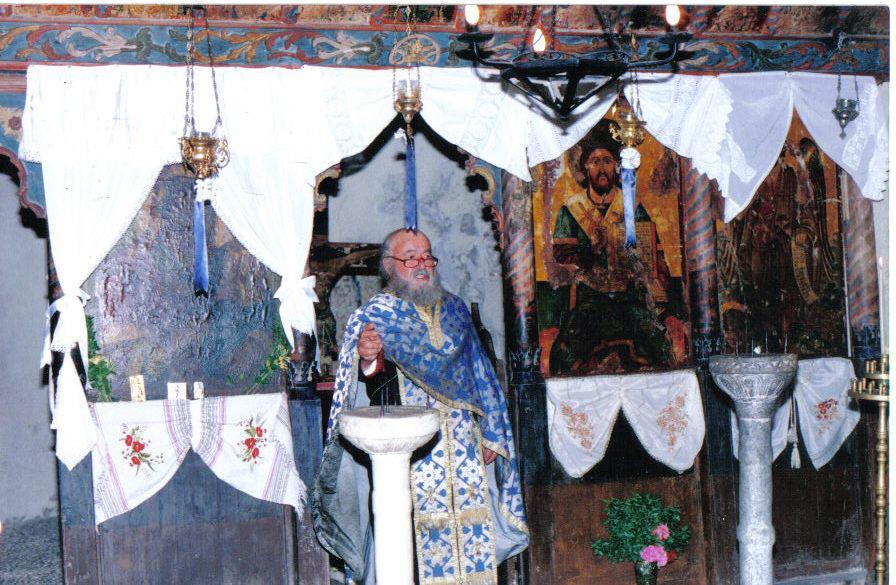
Mihalis Pizimolas
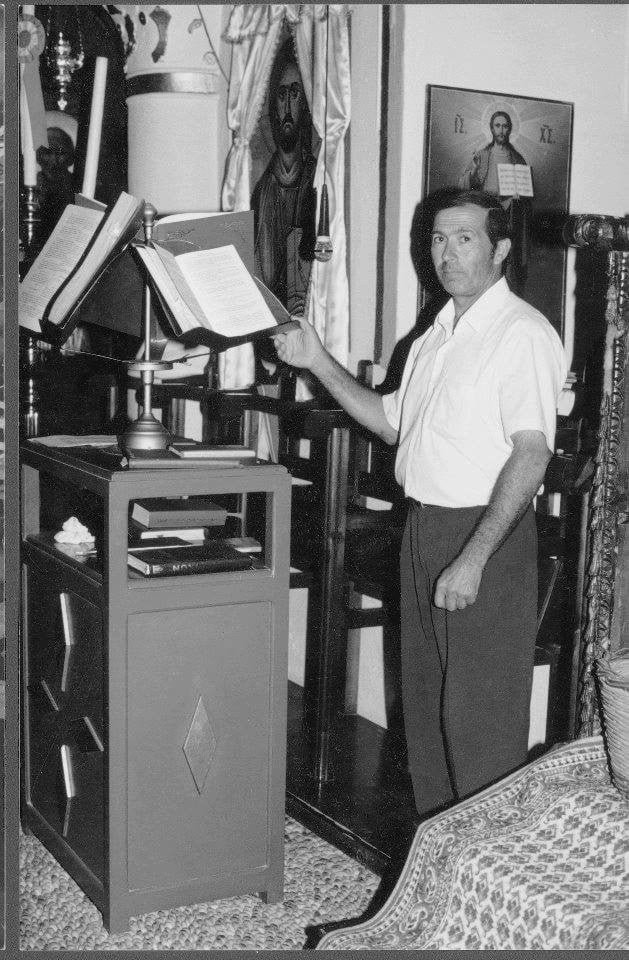
For Mihalis Pizimolas, his Greek Orthodox faith has lead him to serve God and to manifest a Christian spirit in all he does.
He was brought up with the beautiful, centuries old rural traditions of his Southern Rhodes heritage that strengthen the bonds of faith, family and community. He entered into a lifetime of service for the benefit of his church, his community and fellow human being.
Mihali is involved in the inspirational ministry of chanter dedicated to chanting the beautiful Byzantine hymns of the Orthodox Liturgy in the churches and monasteries of Mesanagros.
Icons
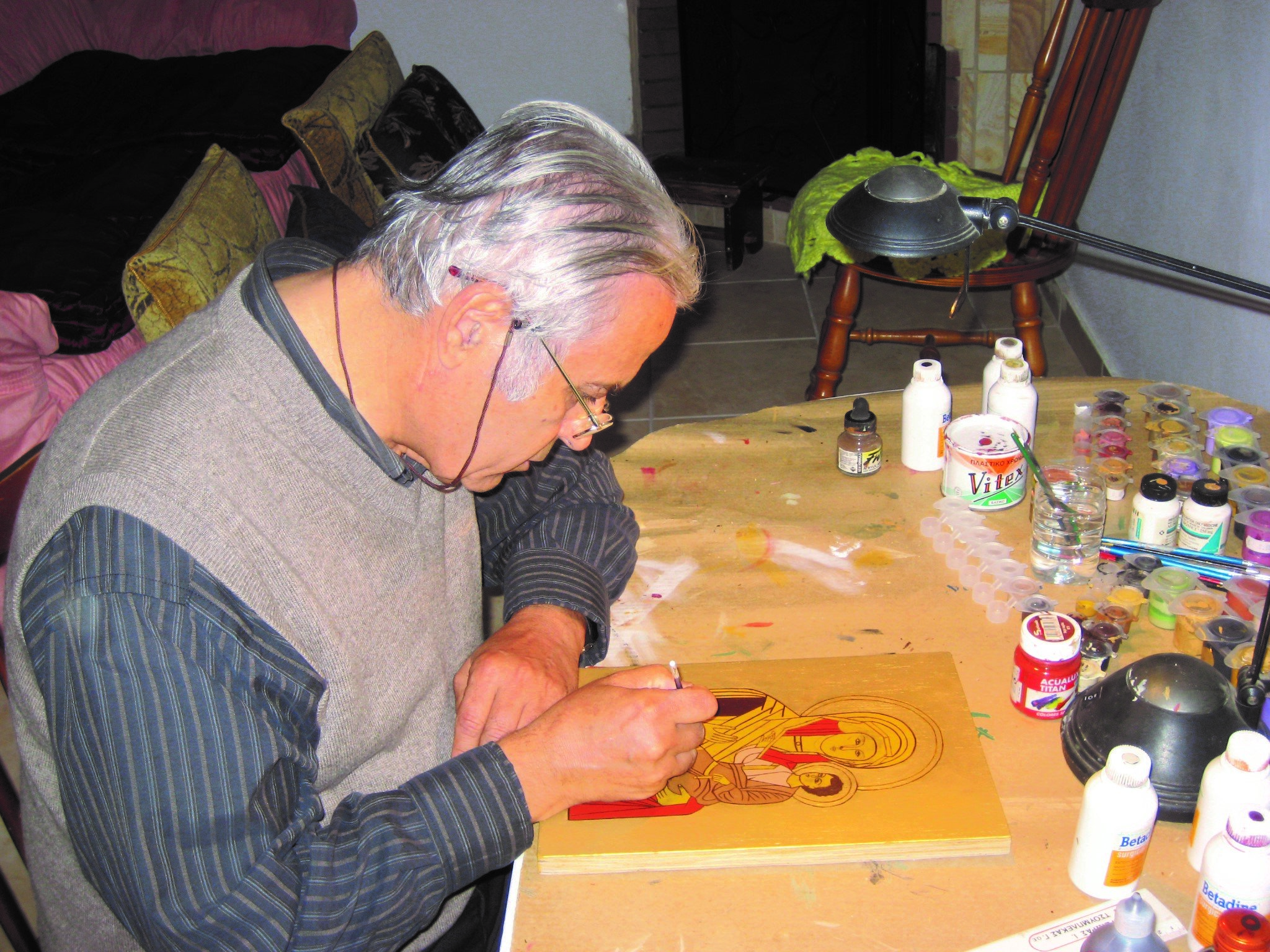
Icons remind us of our Heavenly Spiritual Inheritance.
Every icon represents a holy person who has become a Saint because they lived their lives following the Scriptural Virtues of love, humility, justice, piety, fidelity, fortitude and compassion.
Icons are like windows depicting holy images of Jesus Christ, His Saints and God's everlasting Heavenly Kingdom, the Dwelling Place of our dear Lord, Jesus Christ, our Blessed Virgin Mary (the Theotokos), the Saints, Prophets, Angels and all God's people.
They are revered and honored with candles, oil lamps (kantilia), incense and precious metal covers.
Greek homes, places of business, public transport and even the family car proudly adorn at least one or more icons of Jesus, our Blessed Virgin Mary (the Theotokos) or their Patron Saint.
Every Greek Orthodox church is covered with colorful icons from Christ up in the dome to Saints and historic, Biblical Events depicted on the walls to create a distinctive atmosphere of inspiration.
The iconostaseion (altar screen) of every Greek Orthodox church will depict Christ, the Theotokos, St. John the Baptist, the Patron Saint of the church as well as images of other Saints.
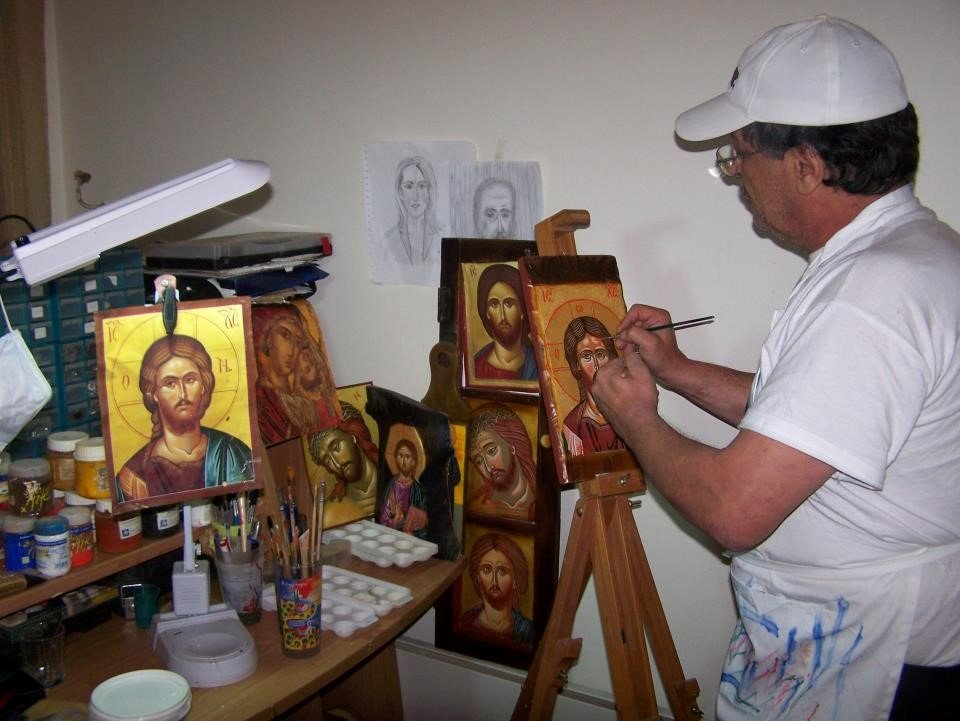
Saints
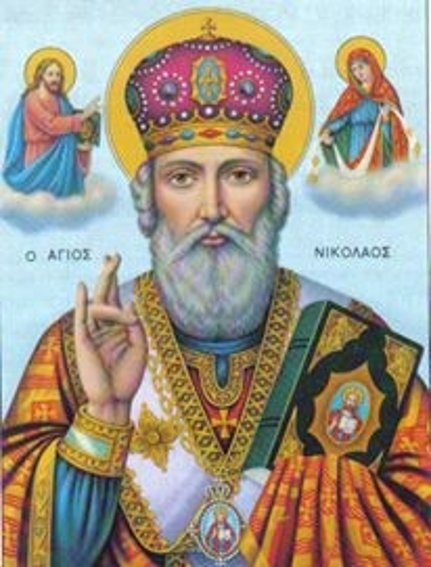
Many Orthodox Christians have a special bond with their own Patron Saint or Guardian Angel whom they honor throughout their lives.
The icon of a Patron Saint adorns the mantelpiece of most Orthodox Christian homes.
Greek names generally are derived from a Saint or a historical Greek name.
In a traditional Greek family, the first born son is named after the father's father in order to continue the family name.
If there is a second son he is named after the mother's father.
Girls are named after each parent's mothers.
Th Orthodox faithful honor Saints by celebrating Name Days as well as their own birthdays.
Our Name Day is the Patron Feast of the Saint whose name we received in baptism and became members of the Body of Christ which is the Christian church.
It is our feast day so we go to church on this day to honor our Patron Saint and to receive Holy Communion.
At home, we celebrate with family and friends who come to wish us Happy Name Day.
Biblical Doctrine
God's people follow the Teachings of Biblical Doctrine to Glorify God.
The main Biblical Doctrines are:
*The Trinity - The Father (God), the Son (Jesus Christ) and the Holy Spirit).
*Uniqueness of Jesus (Virgin Birth)
*The Cross of Christ (Salvation)
*Resurrection
*Angels
*The Bible (Word of God)
*The Christian Church
Golden Rule
The Golden Rule is a fundamental, ethical principle of conduct by all Christians to their neighbor.
This precept in the Gospel of Matthew (7:12) was proclaimed by Jesus Christ during His Sermon on the Mount.
It was described by Him as the Second Great Commandment: "Do unto others as you would have them do unto you."
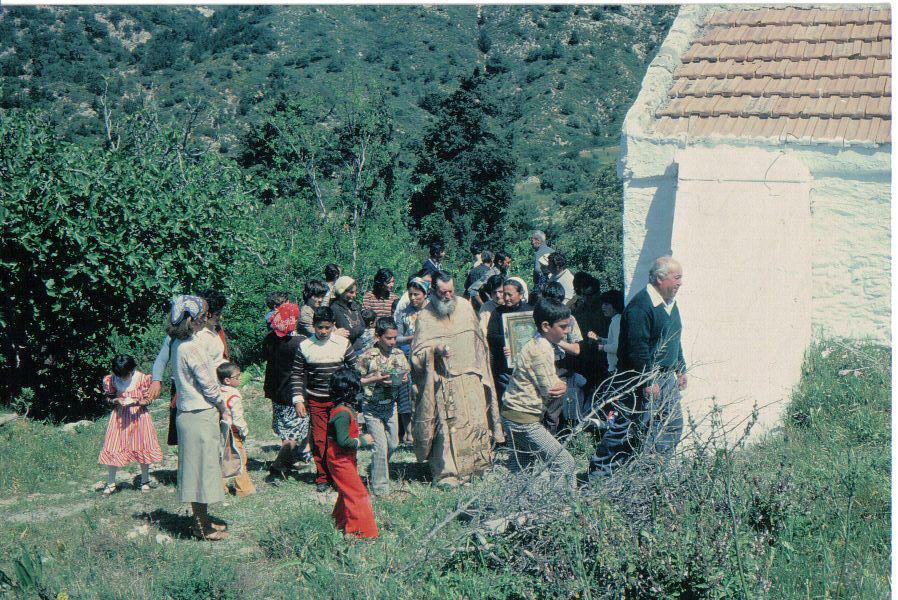
Glorifying God by Service
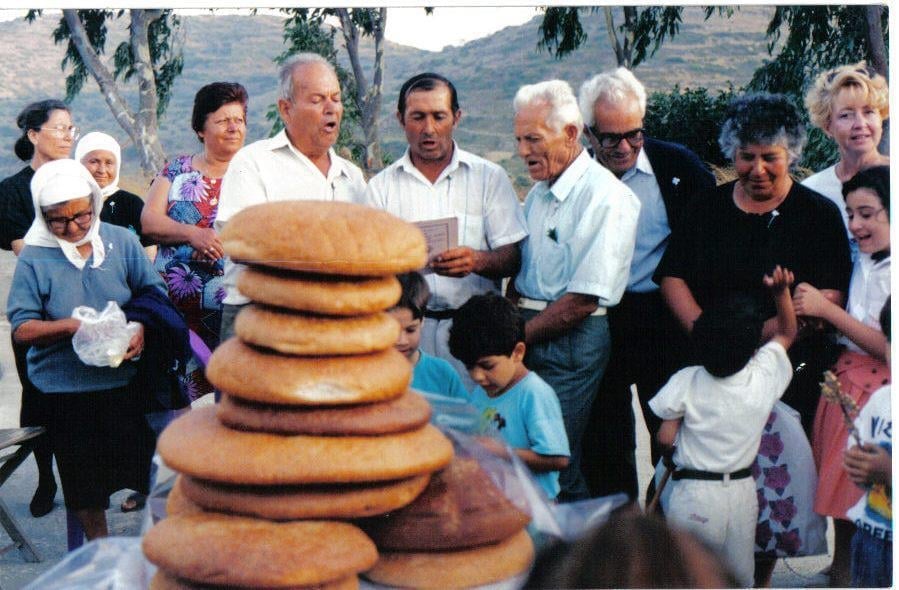
James 4:6 says, "God gives Grace to the "humble".
A servant of God has their heart set on the building spiritual assets.
Jesus Christ came to serve and to give.
To serve and to give without expecting anything in return, define Christian life.
Humility, is the root from which all good works and deeds flow.
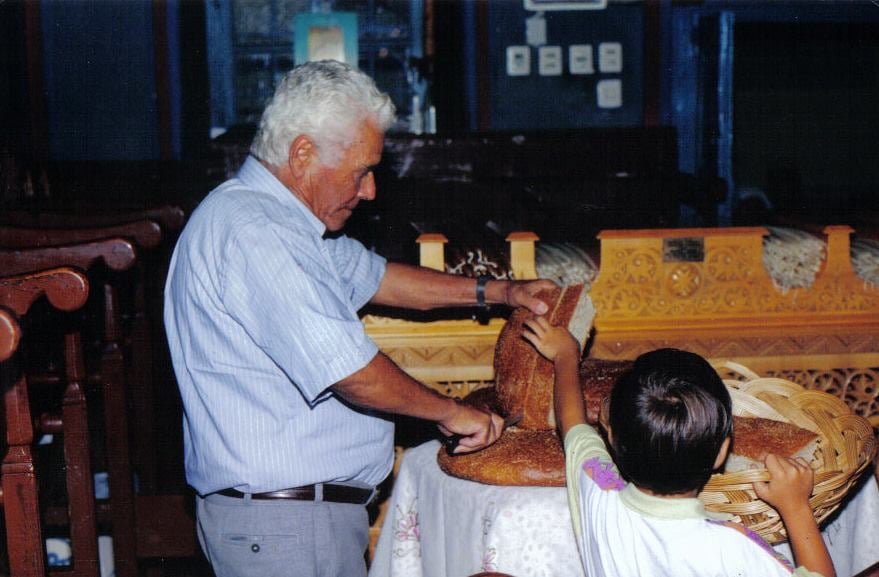
Christian Baptism
By Baptizing Jesus, John the Baptist declared to all, that Jesus was the Son of God, the One they had been waiting for.
Before He ascended into Heaven, Jesus gave His last earthly instructions to His Disciples.
1. They were to share the Gospel to all people
2. Baptize believers
"Go ye therefore, and teach all nations, baptizing them in the name of the Father, and of the Son, and of the Holy Ghost: Teaching them to observe all things whatsoever I have commanded you: and, lo, I am with you always, even unto the end of the world".
(Matthew 28:19-20)
Greek Orthodox Baptism
A Christening in the Greek Orthodox tradition focuses on Baptism, Chrismation, Tonsuring and the Rite of Churching.
A Godparent will purchase a box with all of the baptism essentials which include clothing, shoes, holy sheets, olive oil, a bar of soap, three white Baptizmal candles (one large and two smaller, matching candles for witnesses to circle the font), martirika (witness pins) and a Cross (universal symbol of Christianity) which is placed around the baptized child's neck.
Baptism is the initial Sacrament through which a person (generally an infant) is immersed in water three times, in the Name of the Father and of the Son and of the Holy Spirit.
After immersion, the infant is then placed in the arms of the Godparent with a white sheet, which symbolizes purity.
The Sacrament of Chrismation together with Baptism, introduces the new member into the Greek Orthodox Church.
The priest anoints the infant with Chrism, making the Sign of the Cross on the forehead, eyes, nostrils, mouth, ears, breast, hands, and feet using the following words each time: "The seal of the gift of the Holy Ghost" (in Greek: Σφραγὶς δωρεᾶς Πνεύματος Ἁγίου).
The priest will then cut some of the child's hair crosswise to signify that Christ will be the Head of the baptized child.
After the baptism, it is a tradition for the Godparent to take the child to church for Communion on the following three Sunday's.
If the priest gave the infant Communion during the Baptism, the Godparent will take their Godchild for Communion two more times.
The Godparent will observe the child's Name Day and birthday celebrations, and participate in other special occasions.
Holy Communion
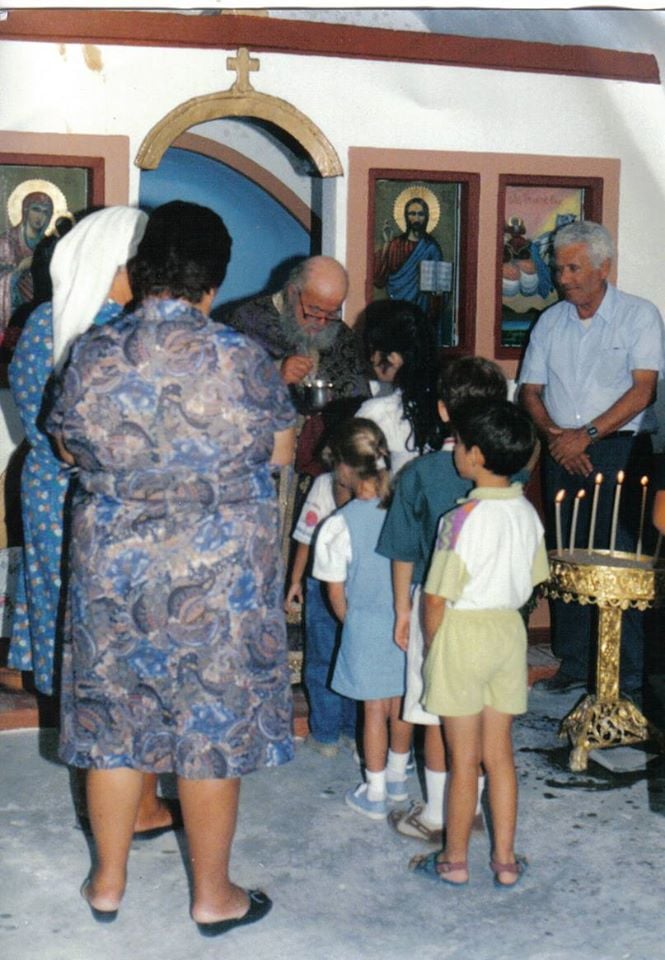
Holy Communion uses bread as a symbol for Jesus’ Body and wine as a symbol for His Blood.
It reminds us of our Lord and Savior's Death and Resurrection.
The Apostle Paul tells us that the Blood of Jesus Christ brings forgiveness of sins.
(Colossians 1:14, Ephesians 1:7)
Sign of the Cross
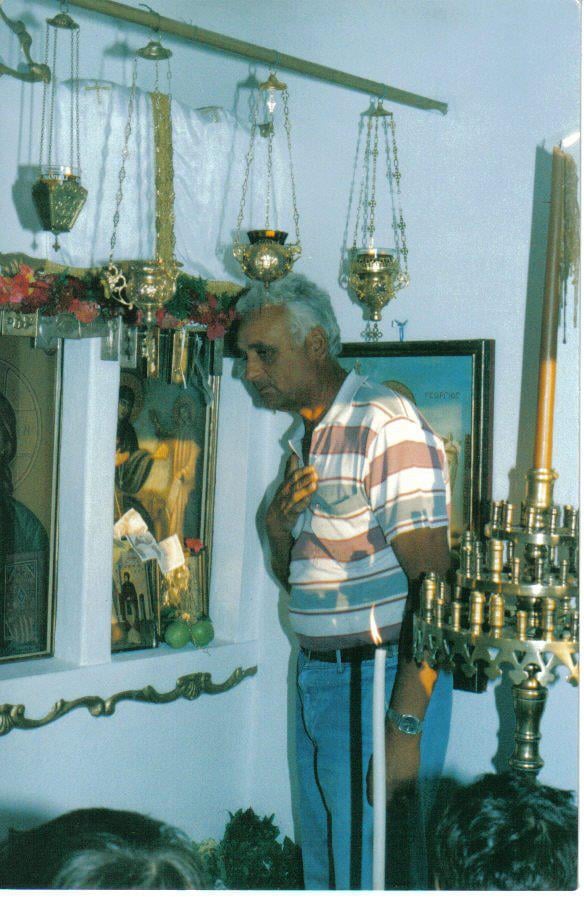
The Sign of the Cross is the sacred sign of our dear Lord Jesus Christ who carried His Cross up Golgotha to be Crucified more than 2,000 years ago.
The Cross of Christ is a cherished symbol of atonement, forgiveness, grace and love.
The Sign of the Cross is a symbolic blessing of reverence for Christians who acknowledge Jesus Christ in their lives.
A Christian makes the Sign of the Cross:
*to commit to Jesus Christ
*to call God's blessing
*when we begin and end prayers
*when we enter a church and during a Liturgy or Sacrament (baptism, confirmation, the Eucharist (Holy Communion), penance, anointing of the sick, ordination and matrimony
*to show reverence for a Saint
*to bless children
*before meals
*to sanctify our day
*to ask for support in times of trouble.
Lighting a Candle
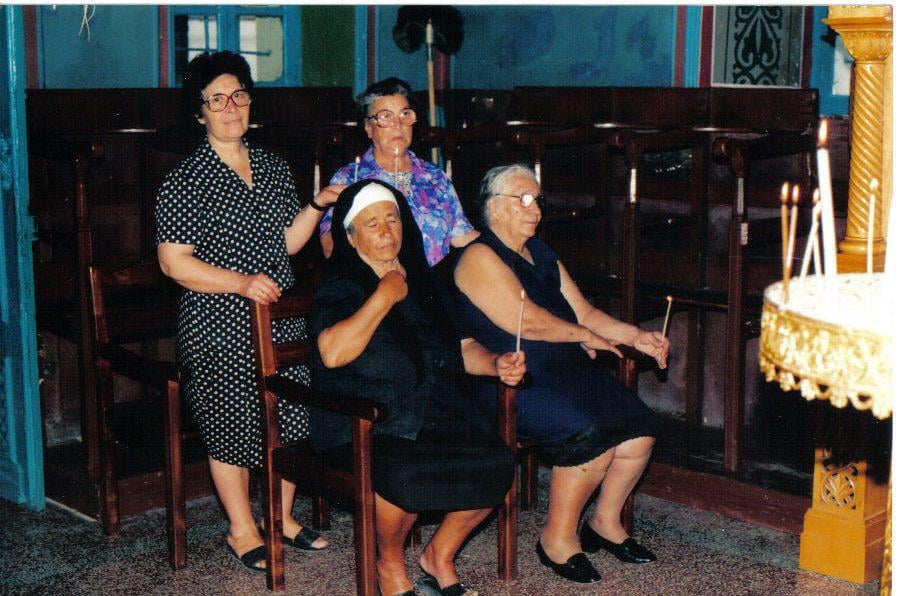
Candles remind us of the Light of Christ.
Jesus Christ said, “I am the light of the world; he who follows Me will not walk in darkness, but will have the light of life.”
(John 8:12)
We light our candle:
*in church to thank God for His many blessings
*to remember loved ones who are sick
for those who have passed into God's Heavenly Kingdom,
*to ask God to have mercy on their souls.
And, we light a candle and pray, to repent for our own sins.
History of the Greek Orthodox Church
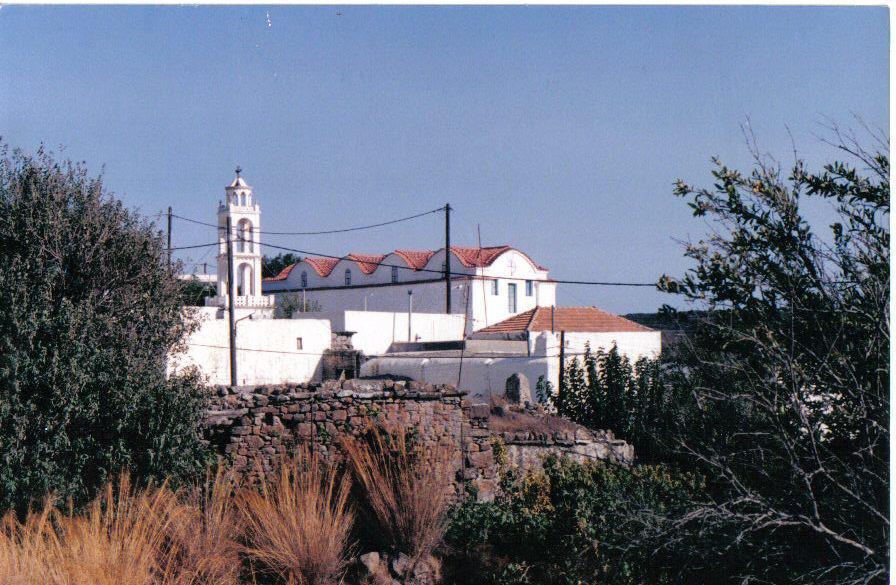
The Great Commission
Through the Great Commission, Jesus endowed His Disciples to become Apostles who were to:
1. Share the Gospel to all people
2. Baptize believers
“Go and make disciples of all nations, baptizing them in the name of the Father, and of the Son, and of the Holy Spirit, and teaching them to obey all that I have commanded you.
And surely, I am with you always, to the very end of the age.”
- Matthew 28:19
Greek Orthodox Origins
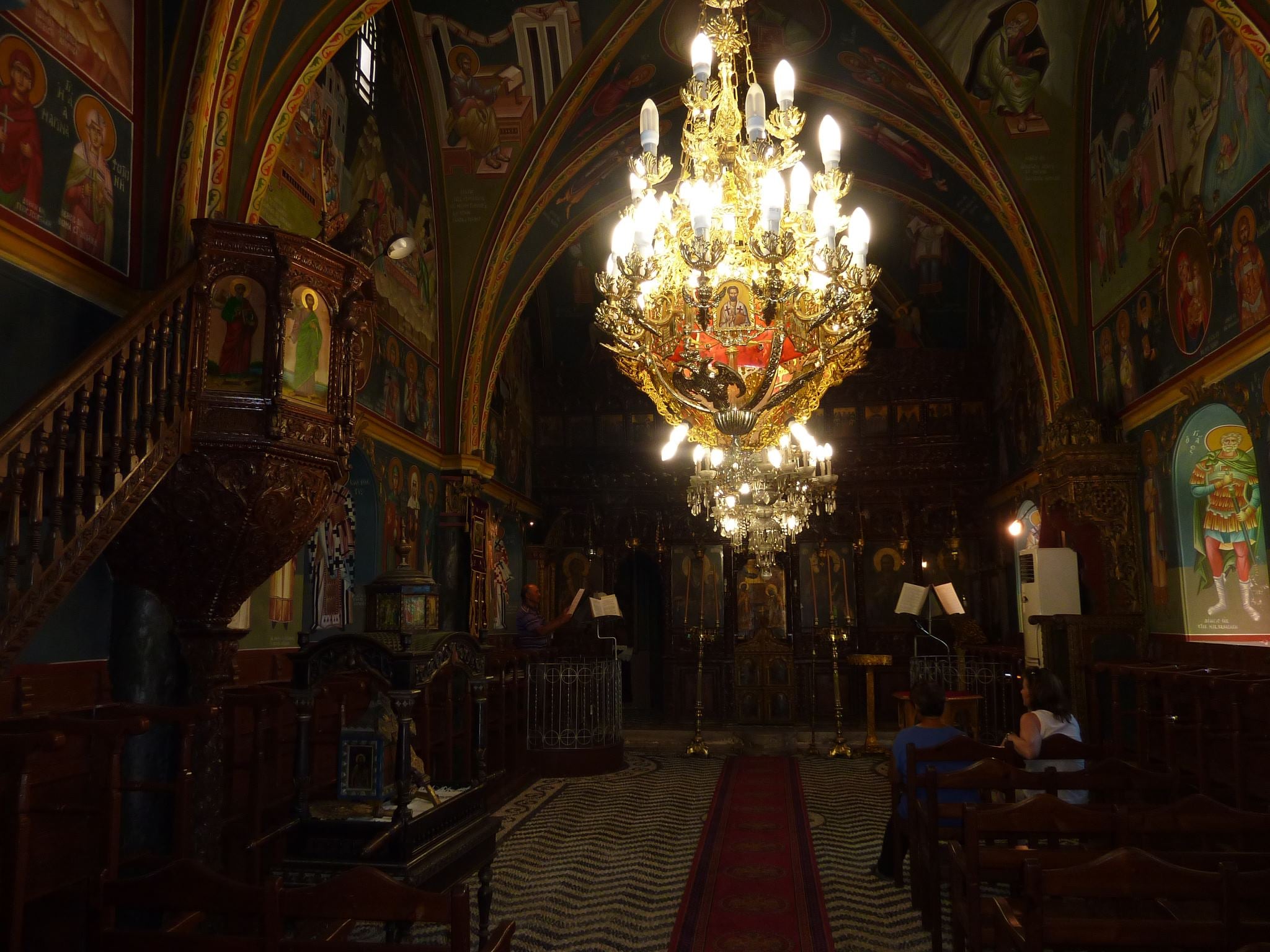
Greek culture influenced the three historical factors of Western Civilization.
They are:
1. Ancient Greece
2. Roman Empire
3. Christianity
Terms that define these three historic factors are "Greco-Roman culture", " Judeo-Christian culture" and "Judeo-Hellenic-Christian culture".
"Orthodox" comes from the Greek words orthos ('right') and doxa ('belief') which means correct belief or right thinking.
The original Greek Orthodox Church traces its history back to the Apostolic Age (33 - 100 AD).
The Five Christian Churches
The four early Greek Patriarchates were Alexandria, Jerusalem, Constantinople and Antioch in the first century A.D.
They are the most ancient Christian churches in existence today.
The fifth was the Latin church in Rome.
They were established to organize the Christian world through the unbroken, Apostolic Succession.
The Apostles appointed successors, known as bishops, and they in turn appointed other bishops and priests through ordination.
These bishops and priests kept the original doctrine of the Church intact.
The Great Schism - 1054 AD
A gradual division took place between the four Eastern Patriarchates and the Latin Church of Rome, culminating with the Great Schism in the 11th century, in which Orthodoxy and the Latin Church (later called the Roman Catholic Church) separated from each other.
The four ancient Greek Patriarchates remain Orthodox today despite being taken over by Muslims.
Impact of Hellenism on Christianity
Hellenism and Judaism formed the basis of early Christianity.
The Apostles names were Hellenized and Greek names were also given to children throughout Judea and the Diaspora (e.g. Andrew, Peter, Paul, Thomas, Simon Philip, Alexander, Jason).
Greek was the international language of the Greco-Roman Period (332 BC - 395 AD).
The New Testament was written in Greek, the Old Testament was also translated from Hebrew into Greek and Greek was used to preach the Gospel of Christ throughout the later, Roman Empire.
Saint Luke the Evangelist, the Greek physician and Christian Historian was born in the then, Greek city of Antioch.
The Early Church ascribes to Saint Luke authorship of both the Gospel according to Luke and the Book of Acts of the Apostles.
Saint Luke was also the first iconographer to paint the image of our Blessed Virgin Mary holding the Infant Jesus in her arms.
Saint Timothy who was born in the Lycaonian city of Lystra, Asia Minor to a Jewish mother and Greek father is a co-author of 2 Corinthians, Philippians, Colossians, 1
Thessalonians, 2 Thessalonians, and Philemon in the Holy Bible.
During the early Roman period, Christians were persecuted and martyred
Constantine the Great made persecution and oppression of Christians illegal through the Edict of Milan in 313 A.D.
Byzantine Era
Constantine the Great broke away from the old traditions of Rome and moved his residence to the Greek city of Byzantium in Asia Minor on May 11, 330 AD.
Byzantium's language and culture were Greek.
Its people regarded the ancient Greeks as their ancestors and while they became Roman citizens, they referred to themselves as Hellene or Graekos to preserve their ancient Hellenic heritage.
Byzantium was to become famous as Constantinople, the capital of the emerging Byzantine Empire.
The Roman Empire eventually became divided into East and West which accentuated Constantinople's independent development.
When Rome eventually fell to Germanic invaders, the Ostrogths in 476 AD, the Byzantine Empire became identified as "The Empire of the Greeks."
For eight centuries, most of the intellectual, cultural, and spiritual developments of the church took place through the Greek language and Greek theological writings.
From Constantinople, the Orthodox, Divine Liturgy, traditions, and doctrines were adopted throughout Eastern Orthodoxy.
The most significant cultural feature that defined the Byzantine Empire was Orthodox Christianity which assumed preeminence over the Christian centers of the East.
A Byzantine golden age emerged where Greek literature, Byzantine art and architecture entered their most glorious period.
Ayia Sofia (Church of Holy Wisdom) built by the Eastern Orthodox, Emperor Justinian was opened on the 27th of December, 537 AD is one of the greatest surviving examples of Byzantine architecture.
And, it was from Constantinople that Greek literature and culture reached Western Europe that helped contribute to the advent of the Renaissance.
Constantine the Great is venerated as a Saint together with his mother, Helene by the Orthodox Church and their Feast Day is May 21.
Helene
Helene (249 - 329), the mother of the Roman Emperor, Constantine the Great was born in Drepanon, Bithynia in Asia Minor to a humble Greek family.
She married Constantius I who was a Roman Emperor from 305 to 306 and founder of the Constantinian dynasty.
Helene was the first Christian pilgrim to the Holy Land.
She built churches on the sites of Christ’s Nativity (in Bethlehem) and Ascension (near Jerusalem) and is revered as the discoverer of the Cross upon which Jesus was Crucified.
Islam
Islam was born in 610 AD through its founder, Muhammad.
By 632 AD, the Orthodox patriarchates of Antioch, Alexandria and Jerusalem were overrun and came under Muslim control.
On May 29, 1453, Constantinople, the Orthodox Christian capital was overwhelmingly besieged by the Ottoman Turks from central Asia and the great Byzantine Empire ended.
Eighty-percent of the Orthodox Christian centers the Apostles of Jesus had evangelized were wiped out in a bloody holocaust by the sword which left the Catholic church in Rome to become the dominant force of Christianity.
Although Constantinople was renamed by the Turks to Istanbul, the head of the Orthodox Christian Church is still located there today.
Ezine Articles Author Link
Click on the Link Below

Newsletter Opt-in-Form
The Keen Traveler
Recent Articles
-
Beauty of Christmas
Dec 11, 25 04:22 AM
The beauty of Christmas is the celebration of the real Christmas Story with the Birth of Jesus Christ, the Son of God, Who came to bring love, hope, and salvation to the world. -
Spiritual Treasures of Life
Nov 26, 25 04:44 AM
Spiritual treasures of life are internal riches that are more valuable and everlasting than material wealth. -
Teachings of Jesus Christ
Oct 14, 25 05:45 AM
The Teachings of Jesus Christ have fascinated people for centuries with their powerful Message of love and hope that have stood the test of time.


